Can you believe it’s back already? No? Well, we can’t either. Despite what was technically the first normal offseason for the Premier League since the COVID-19 pandemic began, the summer has flown by and the 2023-24 season kicks off Friday with Vincent Kompany’s Burnley hosting his former club and the defending treble winners, Manchester City.
A lot has happened this summer — and plenty more is likely to happen with the summer transfer window stretching on until the end of August. So, if you, too, feel like the new Premier League season just snuck up on you out of nowhere, do not fret. Bill Connelly and Ryan O’Hanlon have you covered. They’ve teamed up to preview all 20 teams and get you ready for the start of the new campaign. They both predicted the finishing positions of every club, 1 through 20, and then combined their numbers to create the master predicted finishing order you’ll see listed below.
(Note: All transfer values come from the site Transfermarkt.)
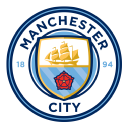 1. Manchester City
1. Manchester City
– Last season’s finish: first place (89 points, plus-61 goal differential)
– Key ins: CB Josko Gvardiol (RB Leipzig, €90 million), CM Mateo Kovacic (Chelsea, €29.1m)
– Key outs: RW Riyad Mahrez (Al-Ahli, €35m), CM Ilkay Gundogan (Barcelona, free transfer)
Key stat
City enjoyed 64.9% possession in Premier League play in 2022-23. Their average over Pep Guardiola’s first six seasons in Manchester: 66.8%. A lot was written about how Guardiola showed a willingness to sit back and counter at times to better utilize Erling Haaland’s skill set, but this was still the most patient, possession-heavy team in Europe.
One big question: Will the Mahrez and Gundogan departures hurt more than we think?
Over the past five Premier League seasons, Gundogan and Mahrez averaged 16.0 goals and 9.6 assists from 82.2 chances created. They were neither the most prominent goal-scorers nor table-setters, but they were integral in filling roles that needed filling and handling the magnitude of tactical responsibilities Guardiola threw at them.
City heads into 2023-24 with all the attacking and creative pieces one might need — Haaland, Kevin De Bruyne, Jack Grealish, Phil Foden, Julian Alvarez and Bernardo Silva (for now?) — but they’ve lost a pair of top-level glue guys. We’ll see how long it takes Guardiola and company to account for that loss. — Connelly
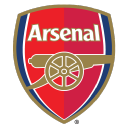 2. Arsenal
2. Arsenal
– Last season’s finish: second place (84 points, plus-45 goal differential)
– Key ins: DM Declan Rice (West Ham, €116.6m), AM Kai Havertz (Chelsea, €75m), CB Jurrien Timber (Ajax, €40m)
– Key outs: DM Grant Xhaka (Bayer Leverkusen, €15m)
Key stat
Over the course of the entire 2022-23 season, Arsenal’s starting XI maintained an 87% consistency from game to game — the highest mark in the league. In other words, one of the main drivers behind Arsenal’s jump from “team that hadn’t finished top four since 2016” to “team that led the Premier League for three-quarters of the season” was Mikel Arteta’s ability to and/or insistence upon relying on a small core of key players.
With a likely regression in injury luck and the addition of Champions League play, the Gunners will need to employ a much bigger squad this season.
One big question: How good is this defense?
Before the World Cup, Arsenal were roughly on par with Manchester City. Despite playing essentially four attackers at once — the front three plus Martin Odegaard — Arsenal were allowing just 0.85 expected goals per 90 minutes before everyone left for Qatar. (Only City (0.81 xG per 90) were better defensively.) After the World Cup, that number rose up to 1.27 xG per 90.
– Read more: Why Arsenal are betting big on Rice, Havertz
The addition of Kai Havertz, a center-forward they seem to want to convert into a midfielder, suggests they’re doubling down on the aggressive identity that got them all the way up to second place, rather than attempting to fix the problem that plagued them in the second half of the season. — O’Hanlon
Craig Burley and Kieran Gibbs explain why Arsenal’s Community Shield victory over Man City is important for the club.
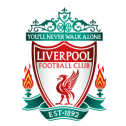 3. Liverpool
3. Liverpool
– Last season’s finish: fifth place (67 points, plus-28 goal differential)
– Key ins: AM Dominik Szoboszlai (RB Leipzig, €70m), CM Alexis Mac Allister (Brighton, €42m)
– Key outs: DM Fabinho (Al-Ittihad, €46.7m), Jordan Henderson (Al-Ettifaq, €14m), CF Roberto Firmino (Al-Ahli, free transfer), CM Naby Keita (Werder Bremen, free transfer), CM James Milner (Brighton, free transfer), Fabio Carvalho (RB Leipzig, loan), Alex Oxlade-Chamberlain (no club)
Key stat
Over the final 10 games of the season, which roughly coincided with Jurgen Klopp’s decision to have fullback Trent Alexander-Arnold essentially play as a deep-lying midfielder in possession, Liverpool had the best pregame expected-goal differential in the league (plus-1.37). While injuries were a driving factor in Liverpool’s worst full season since Klopp arrived at the club, the team also never seemed to perform up to its aggregate level of available talent.
The bearish case against Liverpool is that while they have a ton of talent, it still doesn’t add up to a functional soccer team. The bullish case is that Klopp finally figured out the best way to arrange the talent at the end of last season, and with midfield reinforcements and better injury luck, this will once again be one of the best teams in the world.
One big question: Do you really need a defensive midfielder?
Whatever Liverpool’s thoughts on the matter, the rest of the world is signaling that it might be the most important position on the field.
Over the past year-plus, Arsenal, Real Madrid, Chelsea and Paris Saint-Germain have spent close to €400 million combined on four defensive midfielders with little to no Champions league experience. Manchester City, meanwhile, were anchored by the ever-presence of Rodri, the best in the world at the position and the only player on the best team in the world to appear in at least 80% of the minutes across all competitions last season. Liverpool lost Fabinho and Jordan Henderson, and the only rumored replacement is 19-year-old Romeo Lavia, who is more of a long-term prospect than immediate solution. (That is if they can even sign him from Southampton: as of this writing, the Reds had a third bid rejected.)
Liverpool’s main issue last season was that they gave up a ton of high-quality chances. With the arrivals of Mac Allister and Szoboszlai, the integration of Curtis Jones and the return of a world-class presser like Diogo Jota, it seems like the current solution isn’t to function better in the defensive third but rather to reignite the press and hope that the ball never even gets near their own goal in the first place. — O’Hanlon
Jurgen Klopp admits he’s concerned about Saudi Pro League teams having almost three weeks longer to complete their transfers than European clubs.
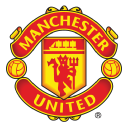 4. Manchester United
4. Manchester United
– Last season’s finish: third place (75 points, plus-15)
– Key ins: CF Rasmus Hojlund (Atalanta, €75m), AM Mason Mount (Chelsea, €64.2m), GK Andre Onana (Inter Milan, €52.5m)
– Key outs: LW Anthony Elanga (Nottingham Forest, €17.5m), GK David de Gea (no club)
Key stat
Manchester United committed more high turnovers in 2022-23 (33.2 per match, ninth most in the league) than it forced (31.4, eighth most). The other teams in England’s top six averaged a plus-13.1 margin in high turnovers, and United was at minus-1.8.
Manager Erik Ten Hag must hope the addition of a much more possession-friendly goalkeeper (Onana) and another year of instruction can turn United into the type of high-intensity, high-possession team he seeks.
One big question: Does United have its missing piece up front?
The Red Devils had the wrong kind of goalkeeper and a hole at center-forward, where Anthony Martial and loanee Wout Weghorst combined for just six goals in 1,486 minutes and Marcus Rashford had to play there, instead of in more of a left-wing role, for much of the season. That they still finished third speaks to the club’s ceiling.
Onana will fill one hole, and United is closing in on the addition of Rasmus Hojlund, the 20-year-old Danish forward who scored 10 goals in all competitions with Atalanta last season. Is he the answer? — Connelly
Mark Ogden and Nicky Bandini discuss Rasmus Hojlund’s proposed move to Manchester United.
 T-5: Newcastle United
T-5: Newcastle United
– Last season’s finish: fourth place (71 points, plus-35 goal differential)
– Key ins: DM Sandro Tonali (AC Milan, €64m), LW Harvey Barnes (Leicester, €44m), RW Yakuba Minteh (Odense, €8m)
– Key outs: LW Allan Saint-Maximin (Al-Ahli, €27.2m), CF Chris Wood (Nottingham Forest, €17m)
Key stat
Along with Manchester City, Newcastle tied for the league lead in fewest goals conceded with 33. That’s significantly below the number of goals we’d expect them to concede given the quantity and quality of shots they allowed (39.6), but their xG conceded was still second best in the league. Remember: this team was a legitimate relegation candidate midway through the previous season.
Their defensive success was built around the most consistent back five in the league: keeper Nick Pope, fullbacks Kieran Trippier and Dan Burn, and centerbacks Sven Botman and Fabian Schaar started 31 of 38 Premier League games.
One big question: Are their players really this good?
Newcastle’s fourth-place finish probably undersold how impressive this team was last season. Thanks to the late-season tailspin from Arsenal, Eddie Howe’s group actually finished with the second-best xG differential in the league. If you do that in the Premier League, you are, by definition, one of the best teams in the world. But among this squad, how many of these players would walk into the starting lineup at another top Champions League club?
Outside of Bruno Guimaraes and probably Trippier and maybe Botman, there’s not really anyone else. Perhaps Alexander Isak, but he didn’t play a ton and therefore didn’t play a role in Newcastle’s incredible performance. On top of that, their summer signings seem to have improved squad depth more than they’ve raised the talent ceiling.
Maybe a bunch of these players happened to hit their top levels all at the same time, maybe they’re all much better than we think, or maybe the manager is their real superstar. — O’Hanlon
Gab Marcotti feels Sandro Tonali will complement Newcastle’s squad perfectly after his move from AC Milan.
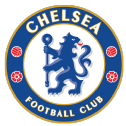 T-5. Chelsea
T-5. Chelsea
– Last season’s finish: 12th place (44 points, minus-9)
– Key ins: CFs Christopher Nkunku (RB Leipzig, €60m) and Nicolas Jackson (Villarreal, €30m), CB Axel Disasi (Rennes, €45m), DM Lesley Ugochukwu (Rennes, €27m), GK Robert Sanchez (Brighton, €23m), RW Angelo (Santos, €15m)
– Key outs: AMs Kai Havertz (Arsenal, €75m) and Mason Mount (Manchester United, €64.2m), CMs Mateo Kovacic (Manchester City, €29.1m) and Ruben Loftus Cheek (AC Milan, €16m), CBs Kalidou Koulibaly (Al-Hilal, €23m) and Ethan Ampadu (Leeds, €8.1m), RW Christian Pulisic (AC Milan, €20m), GK Edouard Mendy (Al-Ahli, €18.5m), CF Pierre-Emerick Aubameyang (Marseille, free transfer), RB Cesar Azpilicueta (Atletico Madrid, free transfer), DM N’Golo Kante (Ittihad, free transfer)
Key stat
Chelsea averaged one goal per match last season. One! It was their lowest average ever in the Premier League and tied for their lowest average in the English first division since 1923-24. And it happened after they spent more than €600 in transfer fees.
One big question: How much can change in a single offseason?
Chelsea is coming off its worst season in 28 years; the Blues’ floor proved far lower than anyone could have anticipated. But the club got a bunch of onerous contracts off the books over the summer and brought in manager Mauricio Pochettino for a vibe shift. They also reconfigured their attack around the energetic Nkunku (58 goals and 23 assists in all competitions over the past two seasons) and Jackson (13 and four in all comps in last year’s breakout campaign), but we’ll have to wait until at least December to see the former in action after he injured his knee in the Blues’ final preseason friendly.
Regardless, they appear to have gone from stale and directionless to fun, fast and happy in a single summer. Does that automatically restore their top-four bona fides? Is the Premier League too deep for them to make a surge that great? — Connelly
Shaka Hislop analyses what Chelsea are getting from signing goalkeeper Robert Sánchez.
 7. Brighton & Hove Albion
7. Brighton & Hove Albion
– Last season’s finish: sixth place (62 points, plus-19 goal differential)
– Key ins: CF João Pedro (Watford, €34.2m), GK Bart Verbruggen (Anderlecht, €20m), CB Igor (Fiorentina, €17m), CM Mahmoud Dahoud (Borussia Dortmund, free transfer), CM James Milner (Liverpool, free transfer)
– Key outs: CM Alexis Mac Allister (Liverpool, €42m), GK Robert Sanchez (Chelsea, €23m), CF Deniz Undav (Stuttgart, loan)
Key stat
After Roberto De Zerbi was hired by Brighton in mid-September of last year, they led the league in both shots attempted per 90 minutes (16.6) and opposition passes allowed per defensive action (9.89).
By some estimates, Brighton also have the second-tiniest payroll in the Premier League. Burying your opponents in shots and pressing them off the pitch? That’s supposed to be the province of the richest clubs in the world or the ones funded by an energy-drink conglomerate. However, for at least a season, De Zerbi’s Brighton proved you can succeed on a comparatively limited budget by doing a better version of what your richest competitors are trying to do.
One big question: How do they keep getting away with this?
If De Zerbi is the driver of their success, then it’s only a matter of time before one of those richer clubs pries him away. If it’s Brighton’s impeccable track record at identifying talent, then, well, can anyone be this good at doing that? Over the prior two seasons, they lost Dan Burn, Yves Bissouma, Ben White, Marc Cucurella and Leandro Trossard to Champions League clubs — and they’ve only gotten better!
Mac Allister has gone to Liverpool, and we’ll see if the Seagulls can hang on to Moises Caicedo for a few more weeks. However, they still have all their best attackers, and the hyperpromising teenage duo of Evan Ferguson and Julio Enciso figure to play even more minutes this season. For at least one more season, Brighton are one of the favorites to win the Europa League, and a top-four finish isn’t an impossibility, either. — O’Hanlon
 8. Aston Villa
8. Aston Villa
– Last season’s finish: seventh place (61 points, plus-5)
– Key ins: RW Moussa Diaby (Bayer Leverkusen, €55m), CB Pau Torres (Villarreal, €33m), CM Youri Tielemans (Leicester City, free transfer)
– Key outs: RB Ashley Young (Everton, free transfer)
Key stat
Aston Villa posted 49 points in league play after Unai Emery’s hire, fifth best in the Premier League and only two points outside the top four. They were a little bit fortunate over that span — they averaged 2.0 points per game in matches tied or decided by one goal, most in the league, and they overachieved against their xG averages in both attack and defense — but they were also just a much, much better team. After an early-February funk, they lost just twice over the final three months of the season.
One big question: Can you spend your way further up the ladder?
Brighton used a run of incredible talent identification (and timely sales) to finish sixth last season. But Villa has sold the rights to one star (Jack Grealish) over the past eight years and seems to be trying to build a winner the old-fashioned way: by adding and adding and adding. Torres is an Emery favorite, and Diaby (31 goals and 24 assists in all competitions over the past two seasons) joins a crowded but creativity-deprived attack.
Can this rise continue? — Connelly
 9. Tottenham Hotspur
9. Tottenham Hotspur
– Last season’s finish: eighth place (60 points, plus-7)
– Key ins: AM James Maddison (Leicester City, €46.3m), GK Guglielmo Vicario (Shakhtar Donetsk, free transfer)
– Key outs: DM Harry Winks (Leicester City, €11.6m)
Key stat
Over the past eight Premier League seasons, Harry Kane has scored or assisted on 43% (231 of 541) of Spurs’ goals. It’s looking more and more like Kane’s time in North London will soon end, either because he moves to Bayern via big-money transfer in the coming days or because he leaves via free transfer next summer. However it happens, it will force a ground-up reconstruction of the Tottenham attack.
Tottenham’s Ange Postecoglou addresses talk of Harry Kane leaving the club for Bayern Munich.
One big question: How long will it take Ange Postecoglou to generate possession?
Postecoglou built a particularly dominant Celtic squad around modern pressing and possession (72% last season in the Scottish Premiership), and he takes over a team that hasn’t enjoyed greater than 52% possession since 2018-19. Maddison (28 goals and 21 assists in all comps over the past two years) adds a layer of on-ball prowess, but who else will they bring in for steadier buildup play? And how quickly do they move to replace Kane if he does leave in the coming weeks? — Connelly
 10. Brentford
10. Brentford
– Last season’s finish: ninth place (59 points, plus-12 goal differential)
– Key ins: CB Nathan Collins (Wolverhampton, €26.85m), RW Kevin Schade (Freiburg, €25m), GK Mark Flekken (Freiburg, €13m)
– Key outs: CM Mads Bistrup (RB Salzburg, €6m), CB Pontus Jansson (Malmo, free transfer)
Key stat
There were three teams in Europe’s Big Five leagues last season who generated a non-penalty xG per shot number of at least 0.13: Barcelona, Paris Saint-Germain and Brentford. Per the estimates from the site FBRef, Barcelona’s wage bill was more than seven times the size of Brentford’s, while PSG employed three separate players who each made more than Brentford’s entire team combined.
One big question: No Toney … big problem?
While Brentford might, pound for pound, be the most successful club in all of Europe, they’re now facing their biggest challenge yet: half a season without their best player, Ivan Toney, who has been suspended by the English Football Association for violating over 100 of the FA’s gambling rules.
Last season, only Harry Kane and Erling Haaland accounted for a higher percentage of their team’s non-penalty goals and xG than Toney did for Brentford. The Bees haven’t replaced him via the transfer market yet, and you can count on them once again being one of the most proficient teams in the world on set pieces this season.
But that’s a lot of goals to replace. And as we saw with Leicester City last season, just about any team outside of the top seven is at risk of one really bad run leading all the way down to relegation. — O’Hanlon
 11. West Ham United
11. West Ham United
– Last season’s finish: 14th place (40 points, plus-13 goal differential)
– Key ins: none (yet)
– Key outs: DM Declan Rice (Arsenal, €116.6m), CF Gianluca Scamacca (Atalanta, €25m), AM Manuel Lanzini (River Plate, free transfer)
Key stat
West Ham’s goal differential trailed behind their xG differential (minus-3.65) by a bigger margin than any non-relegated Premier League team last season. The lesson: while some poor finishing variance got Southampton and Leeds sent down to the Championship, it pushed the Hammers down to only 14th.
Under David Moyes, they established a baseline of quality that meant even a terribly unlucky season wasn’t likely to result in relegation.
One big question: Will that still be true without Declan Rice?
Forget about any particulars about his performances or style or whatever. Over the past four seasons, Rice played an average of 93% of the available minutes for West Ham. That’s an absurd amount of game time for a non-keeper or non-defender. The massive fee they got from Arsenal for Rice should allow them to refresh an aging squad and, if spent wisely, improve the team in a number of different positions. However, they still haven’t signed anyone this summer.
We know what West Ham’s level is like with Rice on the field; we’ve just barely ever seen them without him. — O’Hanlon
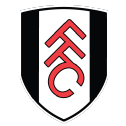 12. Fulham
12. Fulham
– Last season’s finish: 10th place (52 points, plus-2)
– Key ins: CB Calvin Bassey (Ajax, €22.5m), CF Raul Jimenez (Wolves, €6.4m)
– Key outs: none (yet)
Key stat
Fulham overachieved its xG totals in league play by 8.0 goals, the fourth-best overachievement in the league and most for a team that didn’t employ Erling Haaland, Harry Kane or Bukayo Saka. And while they had a strong attacking anchor in Aleksandar Mitrovic, he wasn’t the source of overachievement (14 goals from 14.9 xG).
Either they were creating some particularly favorable scoring chances, or they are a major regression to the mean candidate in 2023-24.
One big question: Where do the goals come from?
Mitrovic is looking to leave. Willian (five goals and five assists from 51 chances) might go to Saudi Arabia. The club brought in Jimenez as a potential stopgap, but he has scored nine goals (from shots worth 12.2 xG) in the past two years. Timely goals somewhat nullified the fact that Fulham’s defense stunk last season — 13th in shots allowed per possession, 18th in xG allowed per shot — and it won’t take too many missed chances for this season to go south quickly. — Connelly
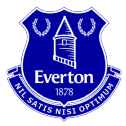 13. Everton
13. Everton
– Last season’s finish: 17th place (36 points, minus-23)
– Key ins: LW Arnaut Danjuma (Villarreal, on loan), RB Ashley Young (Aston Villa, free transfer)
– Key outs: CB Yerry Mina (Fiorentina, free transfer)
Key stat
Everton’s league point total has regressed for four of the past six seasons and by 23 points over the past two. The Toffees haven’t played in England’s second division since 1953-54 but finished just four and two points, respectively, above the relegation zone over the past two seasons.
One big question: How do you steer out of a skid?
Everton is basically England’s Hamburg, a 1980s powerhouse that has enjoyed moments of success since but has spent recent years desperately trying to do just enough to avoid going down. Everton’s current relegation avoidance seems to be “Hire Sean Dyche and hope he can keep generating some magic,” and it worked last season. (At least, it worked to a degree: Everton was 14th in points per game, 14th in goal differential and 13th in xG differential after Dyche’s arrival. That’s not particularly good, but it was just good enough.)
But financial and ownership issues have kept them from spending big on new pieces, not that recent big-spending efforts have helped much. Can Dyche continue buying them time? — Connelly
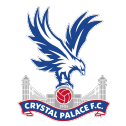 14. Crystal Palace
14. Crystal Palace
– Last season’s finish: 11th place (45 points, minus-9 goal differential)
– Key ins: AM Matheus Franca (Flamengo, €20m), DM Jefferson Lerman (Bournemouth, free transfer)
– Key outs: RW Wilfried Zaha (Galatasaray, free transfer)
Key stat
After Roy Hodgson was hired on March 21, Crystal Palace allowed 84 shots over the remainder of the season. The only team to allow more? Just kidding; there wasn’t anyone. Manchester City were second with 92, while no one else was below 100.
One big question: Goals, anyone?
Not allowing shots is great, but you still must find a way to generate chances on the other end. Among players who featured in at least half of their team’s minutes last season, Crystal Palace had zero players in the top 50 for non-penalty xG per 90 minutes. Their most potent shot-taker was Eberechi Eze with 0.22 npxG/90, which ranked 52nd and roughly put him tied with 33-year-old Diego Costa.
Eze does so much else for Palace — chance creation, ball carrying, off-ball running — that it doesn’t really feel sustainable for them to rely on him to be their top goal-scorer once again. Except, they still haven’t brought in any players this summer who seem likely to change that. — O’Hanlon
 T-15. Nottingham Forest
T-15. Nottingham Forest
– Last season’s finish: 16th place (38 points, minus-30)
– Key ins: LW Anthony Elanga (Manchester United, €17.5m), RB Ola Aina (Torino, free transfer)
– Key outs: CF Sam Surridge (Nashville FC, €5.8m), AM Jesse Lingard (no club)
Key stat
Twenty-six. That’s how many new players Forest signed last season, their first in the Premier League since 1998-99. And they played like a team full of guys who still needed name tags in practice. They pulled 11 points from their final six matches to save themselves from immediate relegation.
One big question: Does team chemistry kick in now?
They’re probably not done spending on this year’s squad, but Forest is clearly hoping that last year’s enormous player influx begins paying off in earnest this season. Can Elanga and a healthy Taiwo Awoniyi spruce up an attack that ranked 15th in scoring? (It might bear mentioning that Forest averaged 2.0 points and 1.8 goals per game when Awoniyi played more than 70 minutes and 0.7 points and 0.8 goals when he didn’t. But he only did so nine times.)
And after rotating between about nine center-backs and fullbacks, will simply determining a hierarchy and sticking with it help Steve Cooper fix a defense that was 17th in goals allowed? — Connelly
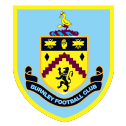 T-15. Burnley
T-15. Burnley
– Last season’s finish: first place in the English Championship (101 points, plus-52)
– Key ins: CFs Zeki Amdouni (Basel, €18.6m) and Michael Obafemi (Swansea, €4m), GK James Trafford (Manchester City, €17.3m), CB Dara O’Shea (West Brom, €7.8m), RW Nathan Redmond (Besiktas, free transfer), LW Jacob Bruun Larsen (Hoffenheim, free transfer)
– Key outs: CF Ashley Barnes (Norwich City, free transfer)
Key stat
Burnley racked up a 64% possession rate, highest in the English Championship, last season. During their six-season stint in the Premier League (2016-22) with Sean Dyche, they never topped 43%. This is an interesting new Burnley led by a familiar old name: Vincent Kompany. The longtime former Manchester City captain has done beautiful things early in his time as a manager.
One big question: Will an attack-by-committee approach work with less of the ball?
Nine different players recorded between nine and 22 combined goals and assists last season, and six return, alongside at least four new attackers. Burnley was progressive and exciting — again, a jarring shift from the club’s by-any-means-necessary identity during the often successful Dyche years — but they’re not going to end up with 64% possession in the top division.
Can depth and modernism continue to work when the competition levels increase so significantly? Can Burnley pull off heavy pressing and possession without many talent advantages? — Connelly
 T-15. Wolverhampton Wanderers
T-15. Wolverhampton Wanderers
– Last season’s finish: 13th place (41 points, minus-27 goal differential)
– Key ins: CF Matheus Cunha (Flamengo, €50m), DM Boubacar Traore (Metz, €11m), RB Matt Doherty (Atletico Madrid, free transfer)
– Key outs: DM Ruben Neves (Al-Hilal, €55m), CB Nathan Collins (Brentford, €26.85m), CB Conor Coady (Leicester, €8.7m), CF Raul Jimenez (Fulham, €6.4m)
Key stat
Julen Lopetegui replaced Bruno Lage as Wolves manager at the beginning of November. Under Lopetegui, they produced the worst xG differential (minus-20.34) of any team in the Premier League.
One big question: What are they trying to do?
Given the deep connections to Portuguese superagent Jorge Mendes, this has always been the question surrounding the latest iteration of the club. Is this a team that’s trying to maximize its performance? Or is it just a clearing house for certain players with certain agents?
For their first couple of years back in the Premier League, the first question almost seemed irrelevant; the team was fantastic and looked like a potential top-four gate-crasher. The midfield duo of Joao Moutinho and Neves was better than most other sides could offer, and the attacking trio of Raul Jimenez, Diogo Jota and Adama Traore was incredibly weird, super fun and really hard to defend against in space.
Today, Moutinho is 36, Neves is off to the Saudi league, Jimenez plays for Fulham, Jota left for Liverpool long ago and Adama never was able to put all the pieces together. They’ve since been completely unable to replace any of the 2018-2020 versions of those players. It could be a long season at Molineux. — O’Hanlon
 18. AFC Bournemouth
18. AFC Bournemouth
– Last season’s finish: 15th place (39 points, minus-34 goal differential)
– Key ins: AM Hamed Junior Traore (Sassuolo, €25.62m), LB Milos Kerkez (AZ Alkmaar, €17.87m), RM Romain Favre (Lyon, €15m), LW Justin Kluivert (Roma, €11.20m), GK Ionut Radu (Inter Milan, loan)
– Key outs: DM Jefferson Lerma (Crystal Palace, free transfer), RM Romain Favre (immediately loaned to FC Lorient)
Key stat
Bournemouth had the worst xG differential in the league last season: minus-25.3. Yes, part of that comes from the messy volatility of their season — they lost 9-0 away to Liverpool and then, you know, beat Liverpool at home — but there’s not much evidence to suggest that those patterns will persist into the future. On the aggregate, you could argue they weren’t the worst team in the league last season, but they were certainly the worst team to not get relegated.
One big question: How much can you change in a single summer?
The above section explains why the club’s new ownership group shocked fans and moved on from manager Gary O’Neil. They knew that the bounces went their way last season, so they brought in Andoni Iraola, one of Europe’s hottest young coaches and a guy who led Rayo Vallecano to massively outperform their resources in LALIGA while playing an innovative and attractive tactical style. They’ve also continued to invest in a number of intriguing, young players from across the continent.
Unlike so many relegation fighters in the past, Bournemouth aren’t relying on a defense-first British coach and proven Premier League veterans in an attempt to just scrape by. I like what I’m seeing, but even a significant degree of sudden improvement might not be enough to keep them up. — O’Hanlon
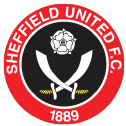 19. Sheffield United
19. Sheffield United
– Last season’s finish: Second place in the Championship (96 points, plus-34 goal differential)
– Key ins: CB Auston Trusty (Arsenal, €5.8m), CF Benie Traore (Hicken, €4.6m), CM Anis Slimane (Brondby, €2.7m), LB Yasser Larouci (Troyes, loan)
– Key outs: CF Ilman Ndiaye (Marseille, €17m), LB Enda Stevens (Stoke City, free transfer), CF Billy Sharp (free transfer)
Key stat
As a general rule of thumb, the promoted team most likely to stay up in a given season is whichever of the three had the best defense in the Championship. Sheffield United allowed 44.3 expected goals last season — more than Burnley and Luton Town.
One big question: How will they replace N’Diaye?
Last season, the Senegal international forward led the club in both goals (14) and assists (11). Those numbers overstate the quality of his performance a bit, but he was still first on the team in xG and second in expected assists.
The Blades haven’t really replaced him via the transfer window just yet, and while there are some younger potential internal options who can eat up some of those lost minutes and hopefully maintain the efficiency of their performances, it’s just a lot of attacking production to try to replace for a team that wasn’t comparatively all that strong defensively last season. — O’Hanlon
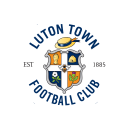 20. Luton Town
20. Luton Town
– Last season’s finish: third place in the English Championship (80 points, plus-18)
– Key ins: LB Ryan Giles (Wolves, €5.9m), CM Tahith Chong (Birmingham, €4.7m), CB Mads Andersen (Barnsley, €3.5m), DM Marvelous Nakamba (Aston Villa, €2.9m), GK Thomas Kaminski (Blackburn, €2.9m)
– Key outs: CB Sonny Bradley (Derby, free transfer)
Key stat
The total market value of Luton’s roster, per the figures at Transfermarkt, is €61.2 million. A Premier League team hasn’t had a value that low since Burnley in 2014-15. Burnley finished 19th that season, and average EPL roster values have more than doubled since. It’s great having Luton Town and its amazing Kenilworth Road grounds back in the top division after 31 seasons; keeping them up for a second season is going to be awfully difficult.
One big question: How does Luton score 31 goals?
Over the past decade, only one team has scored under 31 times in a season and avoided relegation — Huddersfield scored 28 in 2017-18 and finished four points clear, before collapsing the next season — so it seems like a reasonable place to set the survival bar. But the Hatters earned promotion primarily through stingy defense and just enough one-timer goals; their 1.24 goals per game would have ranked 13th in the Premier League. Plus, most of their additions this summer have been defense-based.
Do they have any hope of scoring enough to survive? — Connelly



